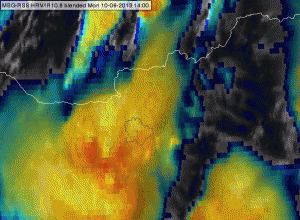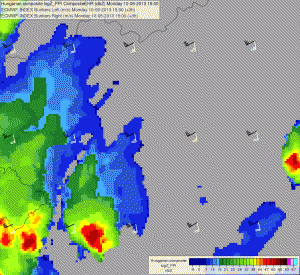Martin Setvák and Michaela Radová (Czech Hydrometeorological Institute, Praha, Czech Republic) have compiled a database of subjectively detected overshooting tops, based on data from the MSG-1 (Meteosat-8) 2.5-minute rapid scan experiments. As the subjective detection of overshooting tops was based on HRV data, it can be used either for validation of various automated OT detection methods (VIS or IR based), for development and testing of new OT detection algorithms, or for any research purposes.
The database contains series of images (HRV, IR10.8-BT, sandwich of HRV and IR10.8 bands, sandwich of HRV and the Storm RGB product, and BTD (WV6.2-IR10.8)) with plotted locations of all subjectively detected overshooting tops, an Excel file with basic information about the detected OTs, and a PDF file with description of the used method (a paper from the 2014 EUMETSAT conference in Geneva).
As the authors spent a non-negligible time on setting up the database, they would acknowledge to have an overview of who is using the database, and therefore the zip file below is password protected. Anyone willing to use this database for her/his work (or just browse the database images) is therefore kindly asked to contact the authors and request the password (from michaela.radova@chmi.cz or setvak@chmi.cz). Any feedback is welcome.
Download: MSG_OT_database.zip (size 660 MB).



